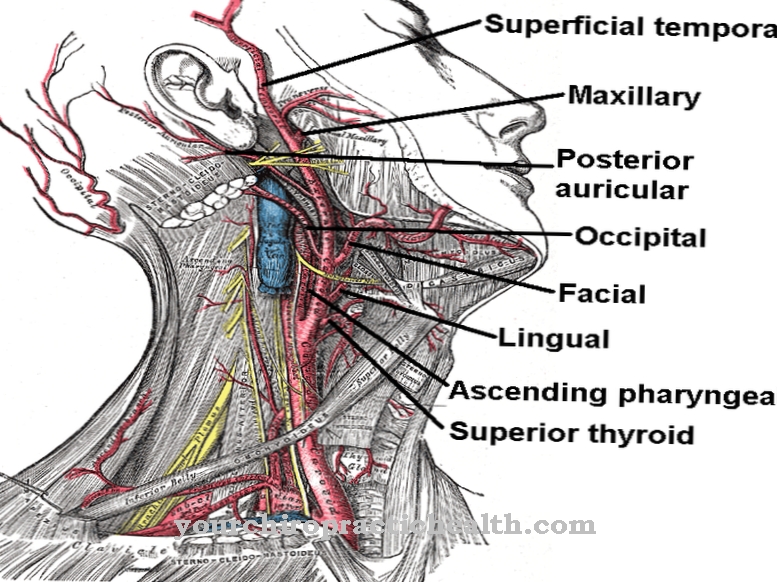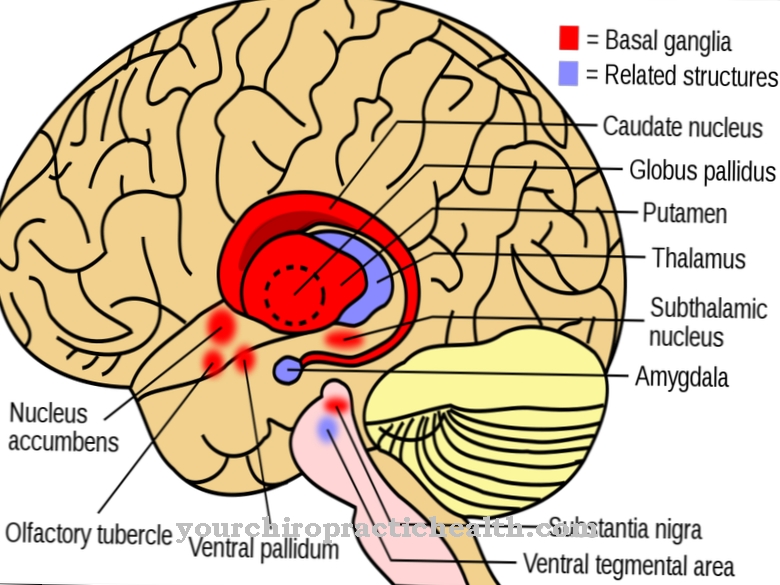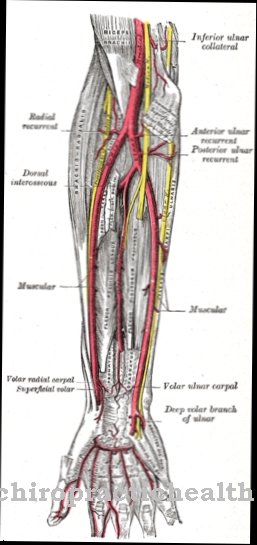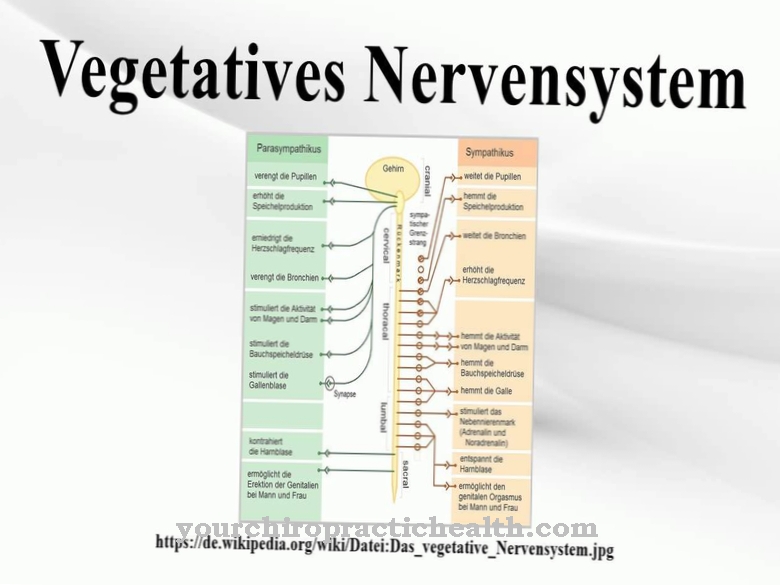Of the Joint space separates the articular surfaces from each other. It contains synovial fluid that contributes to nutrition, mobility and protection of the joints. If the joint space narrows or widens, there is a pathological change in the joint.
What is the joint space?
Medicine distinguishes between fake and real joints. In addition to cartilaginous bone connections, synchondroses and symphyses, the connective tissue bone connections, the syndesmoses and the synsarcoses are fake joints. Faux joints differ from real joints in their structure.
In real joints, there is a gap between the ends of the abutting and interlocking bone ends, which is referred to as the so-called joint gap. The joint gap is therefore the gap-shaped cavity of the cartilage surfaces, which makes up a part of the joint cavity and is a characteristic feature of diarthrosis. The body has over 100 joints.
A large part of it is one of the real joints with a fluid-filled joint space. The viscous synovial fluid is a required component of every joint space and is also called synovia. The substance in the joint space nourishes the bones and enables them to move. Physiologically, joints like the tarsal joint have several joint spaces.
Anatomy & structure
The joint space lies between the individual cartilage surfaces that are involved in a joint. The space in between is created in the shape of a gap, which explains the designation as a joint gap. The entire internal space of the joint enclosed within the joint capsule is referred to as the joint cavity.
The joint cavity is mainly formed by the joint space and is filled with synovia. This synovial fluid is of a viscous consistency. It serves as a lubricating film for the bones and in this way enables bone movements. The synovial fluid protects the articular cartilage during movements by regulating the friction down and thus reducing signs of wear and tear. Since it is made up of substances like glucose, it also nourishes the joints. The volume of synovia in the joint space differs from joint to joint.
In addition to joint gaps and synovia, the joint cavity may also contain intra-articular structures such as discs, ligaments, tendons or fatty bodies. In larger joints, the joint cavity as a whole is often connected to bursa.
Function & tasks
From a functional anatomical point of view, it is basically the joint gap that enables the movement of a joint. Joints connect free bone ends with one another and give them a certain range of motion on different axes, depending on the type of joint. In addition to extension, abduction, adduction, flexion, and rotation, some joints in the body can perform pronations, supinations, nutations, oppositions, inclinations, and repositions.
The range of motion depends on the type of joint. Real joints with a joint gap can, for example, correspond to three-axis ball joints and thus be able to flexion, extension, abduction and adduction as well as external and internal rotation. Biaxial egg joints with joint space are also real joints and realize, for example, flexion-extension movements or side-to-side movements. The real joints with joint space also include biaxial saddle joints with the ability to flexion and extension as well as abduction and adduction. Uniaxial cylinder joints are also real joints and have a joint gap. You can bend and stretch.
Uniaxial real joints are also the tenon joints. Only plane joints are static, but they have translational degrees of freedom. Genuine bicondylar joints with joint gaps are biaxial and, in addition to flexion and extension, perform external and internal rotations, for example. The joint space is essential to all of the movements mentioned. It contains the synovial fluid, which lies as a lubricating film over the cartilage during movements and thus reduces the friction between the elements.
Without the friction reduction of the synovia in the joint gap, the joints would wear out after a very short time and become rigid in movement. In addition, the cartilage would not be able to survive without the supply of synovial fluid in the crevice, as the glucose contained nourishes it.
Diseases
The joint gap of a joint is an important factor in radiological diagnostics for assessing a joint and any joint changes. An enlarged joint space can indicate to the doctor, for example, an injury to the ligament structures or an effusion of the joint.
With a joint effusion, fluid collects inside the joint. This condition is often trauma-related or related to inflammation. Joint effusions can also be caused by degenerative joint diseases such as osteoarthritis. In addition, gout, hemophilia, and rheumatoid arthritis cause joint effusions. In addition, tumors are often associated with the appearance and associated changes in the joint space. The assessment of the joint gap thus gives the doctor not only indications of a joint effusion but also indications of major primary diseases in which the joint effusion could have developed.
In some cases, the x-ray shows a narrowed or even completely eliminated joint space. Such a discovery is an indication of rheumatoid arthritis or a degenerative disease such as osteoarthritis. Since the joint space separates the joint surfaces involved and which require contact, it is by nature rather small. If the cartilage surfaces are in normal condition and, for example, do not have any calcifications, the gap between healthy cartilage appears much larger on an X-ray than the gap between degenerative cartilage surfaces.
With degenerative changes in the cartilage, the protective cartilage parts of the joint break down and the bony joint surfaces slide closer together. This phenomenon results in the joint space narrowing on the X-ray. The narrowing of the joint space is divided into two forms. An evenly concentric narrowing of the joint space indicates arthritis. In contrast, unevenly eccentric narrowing of the joint space occurs in osteoarthritis.



























